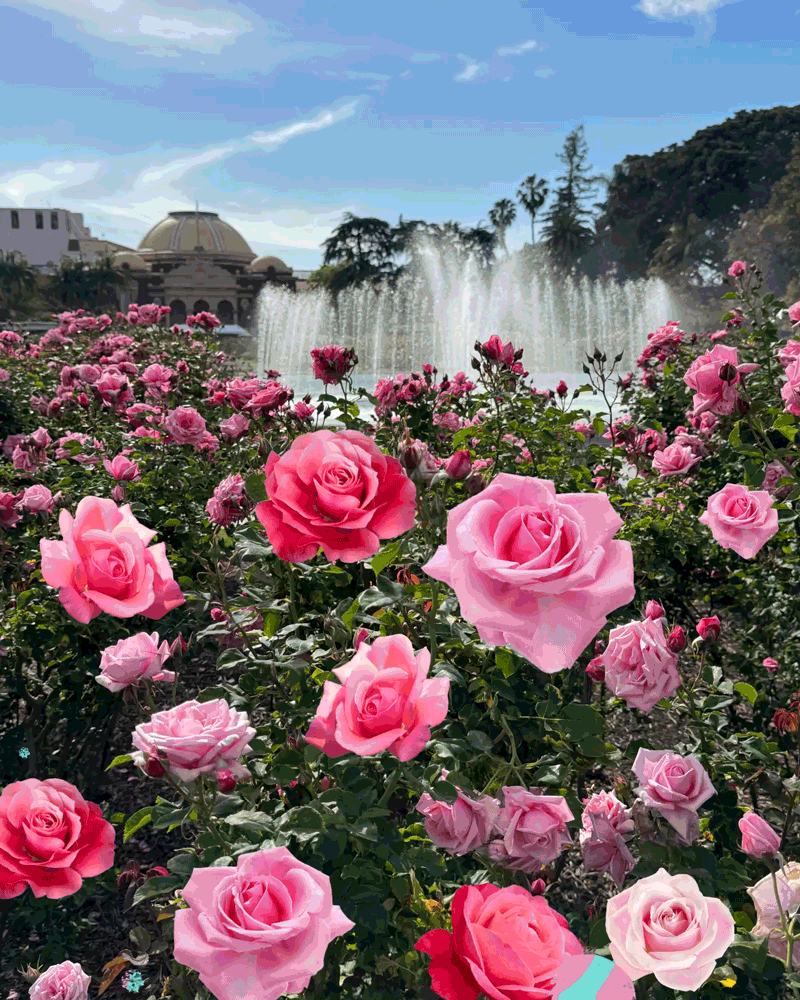Rose Fans No Longer Feeling Blue
- Share via
Roses are red and a variety of other colors. But they’ve never been blue -- an omission rose breeders have sought for centuries to remedy.
“It would be a beautiful thing to see,” said James Armstrong, an award-winning flower show exhibitor and consultant to the San Francisco Rose Society.
Breakthroughs in biotechnology may finally resolve the quest for the elusive blue rose, which does not exist because roses lack the corresponding pigment genes.
Technology also promises to restore sweet smells to the rose and other flowers. Generations of commercial breeding have led to beautiful but bland-smelling roses. Their colors are stunning and vase lives long, but they have little fragrance.
Genetic engineers also are busy bringing science to bear on diseases and pests that affect the world’s 120 rose species, which have blossomed into a $10-billion-a-year business worldwide.
Still, it’s the blue rose that remains the biggest prize.
At Vanderbilt University School of Medicine in Nashville, scientists studying how drugs metabolize in the liver stumbled across a human protein that may hold the key to creating the world’s first known blue rose.
Elizabeth Gillam, working in the lab of biochemist F. Peter Guengerich, amazed her boss one day with a flask of bacteria that she turned blue with an enzyme taken from a patient’s liver. Gillam and Guengerich now are trying to insert into roses the human gene that produces that blue enzyme.
“I would have called you crazy five years ago if you told me I would be pursuing a blue rose,” said Guengerich, who spends most of his time researching disease-fighting drugs. “It’s not something we set out to do.”
Guengerich marvels that so many gardening enthusiasts lust after the blue rose, the pursuit of which has reached near-mythic proportions.
“For some reason this is the holy grail for this type of work,” Guengerich said. “We could try to create blue cotton, blue anything, really.”
They’ve managed to get only a few blue spots into the stems. “It’s not as easy as you may think,” Guengerich said. “It’s going to take more work.”
Guengerich and Gillam are talking to biotechnology companies about helping them develop a blue rose.
They’re not alone -- Florigene, an Australian company, was launched in 1986 to develop a blue rose. Its scientists have tried to splice a “blue” petunia gene into roses, with little success.
Sweeter-smelling roses are perhaps closer to market. Researchers around the world are working to identify scent genes in roses and other flowers. A key step has been mapping their genomes.
A group of Israeli researchers published a paper in the journal Plant Cell in September that compared the genome of the strong-scented Fragrant Cloud rose to that of the nearly odorless yellow rose. They isolated genes that occurred in only the fragrant rose and may be responsible for scent. The trick now is to splice the scent genes into non-fragrant varieties, a not-so-easy task.
“Unfortunately, we don’t have the technology to transform the rose,” said David Weiss of Hebrew University of Jerusalem, co-author of the Plant Cell paper. “We are working on it.”
At Clemson University in South Carolina, researcher Sriyani Rajapakse has developed DNA “fingerprints” so growers can protect their rose breeds from being stolen. She also has produced a rough draft of the rose genome.
Rose genomes will allow growers to more easily and quickly weed out undesirable plants, Rajapakse said. Now, growers typically have to wait until all of their roses bloom to decide which plants to keep and which to discard.
“Biotechnology holds great promise for roses,” Rajapakse said.
Among other biotechnology projects that soon may be underway is the creation through genetic engineering of thornless roses. Robert Skirvin, a professor at the University of Illinois at Urbana-Champaign, hopes his work with thornless blackberry bushes can be used to de-thorn the stems of brambled rose varieties.
Other research in various stages could add more panache to the ornamental flower industry. Of the top 10 selling flowers, only the freesia has a naturally occurring blue variety.
Although there’s growing criticism of biotechnology’s use on crops to produce food and pharmaceuticals, protest against tinkering with flower genes has been muted. That’s probably because flowers generally aren’t being consumed.
A few complaints have come from purists, but serious hobbyists such as Armstrong of the San Francisco Rose Society view biotechnology as a great way to grow better, hardier flowers.
“They still have to be extremely careful that there isn’t inadvertent hybridization,” Armstrong said.
“But I’m not a purist. It would be nice to see a blue rose, and the only way that’s going to happen is through genetic engineering.”






